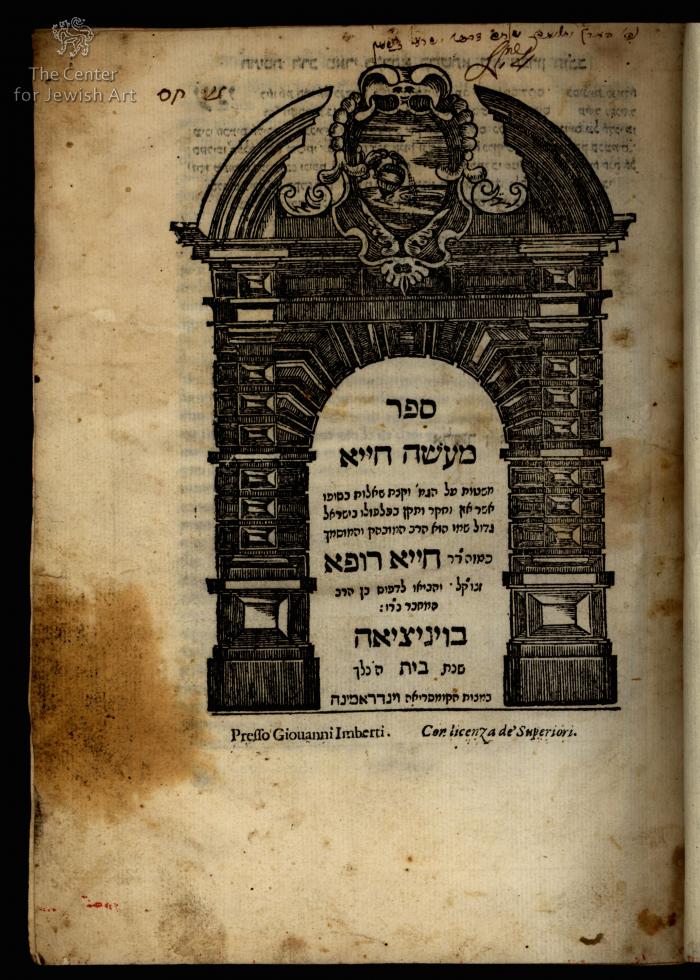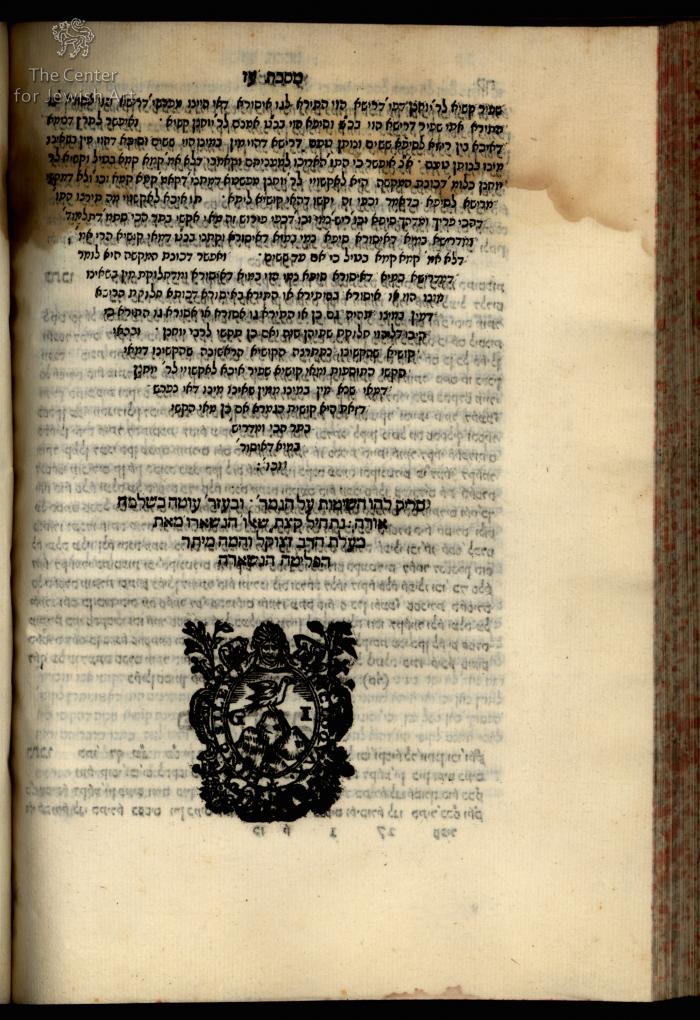Obj. ID: 37623 Ma'aseh Chiyya by Chiya Rofe, Venice, 1652

sub-set tree:
This text was prepared by William Gross:
First edition of the novellae and responsa of R. Hiyya Rofe (c. 1550–1618). Little is known of R. Hiyya’s background, including his father’s name. It is known, however, that he was born in Sefad, studied in the yeshivah of R. Solomon Sagis, and counted among his teachers R. Tuvia ha-Levi, R. Joseph di Trani (Maharit), and R. Abraham Shalom; he was instructed in Kabbalah by R. Hayyim Vital. R. Hiyyah was one of the small group ordained by R. Jacob Berab. He served as a young age as a dayyan in the bet din of R. Moses Galante and afterwards resided at various times in Jerusalem and Tiberius, founding a yehsivah in the latter location. Hiyya eventually returned to Safed, his final residence. He was the author of numerous responsa, almost all lost, and novellae, included in this work brought to press by his son R. Meir Rofe.
Monumental architectural title page, containing in Latin the name of the press, Presso Giovanni Imberti, and the Con licenza de’ Superiori of the censor. Additonal ornamentation surrounds the header of Berakhot. Imberti's pressmark appears between the novellae and responsa: a bird perched on three rocks, flanked by the initials GI (Giovanni Imberti).
The Vendramin Hebrew press was established in 1630 by Giovanni Vendramin, who thereby broke the monopoly enjoyed by the Bragadin family in Venice. The press eventually joined with that of Bragadin, however, and the combined presses continued to operate well into the 18th C.




